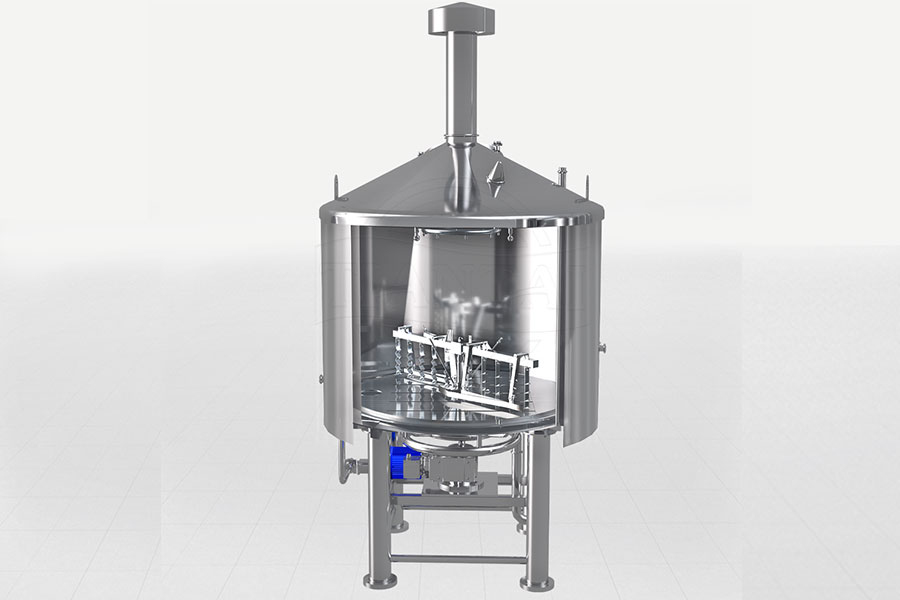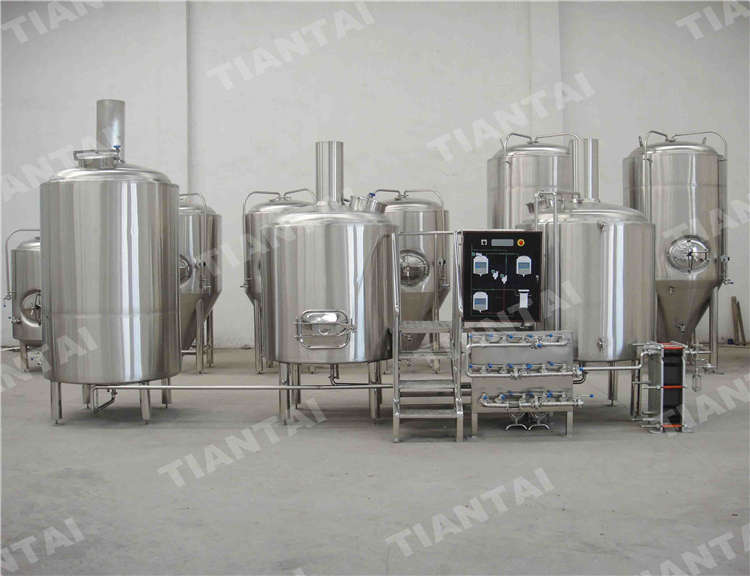Precision and efficiency are crucial in the brewing world, and the lauter tun plays a crucial role in achieving both. This specialized vessel separates wort from grain during the mashing process, a critical step in beer production. It helps extract sugars from the grain, which are then fermented into alcohol. Let’s explore the importance of the lauter tun, including its components, materials, and design features, to better understand its role in the brewing process.
What is a lauter tun?
The lauter tun is a key piece of equipment in a brewery, responsible for separating the liquid wort from the spent grain after the mashing process. The wort contains sugars, which are ultimately fermented into alcohol, while the grain particles (primarily composed of husks and fibers) remain.
This separation process involves a method called “vorlauf,” where the wort is circulated over a bed of grain to clarify and extract as many fermentable sugars as possible. The wort is then rinsed, where the grain bed is sprayed with hot water to remove any remaining sugars, ensuring the highest yield.
Finally, the wort is transferred to the brew kettle for boiling, but before this, it must be completely separated from the grain. The lauter tun utilizes various mechanisms to facilitate this process.

Key Components of the Lauter tun
Sieve Plate and False Bottom
The core of the lauter tun is the false bottom, or sieve plate, which acts as the filtration system. This perforated screen allows the liquid wort to pass through while retaining solid grain particles. The precise perforation pattern of the sieve plate ensures optimal liquid drainage, which is essential for efficient wort separation.
Raking Mechanism
To prevent clogging and ensure an even distribution of the grain bed, most lauter tuns are equipped with a rotating raking mechanism. These rakes help break up any compacted grains, ensuring an even flow of wort through the lauter tun. This is crucial for maintaining a steady flow rate and preventing wort clogging.
Sparging System
To extract every bit of sugar from the grain, the lauter tun is typically equipped with a flushing system. This system sprays hot water over the grain bed, dissolving any remaining sugars before flushing them out with the wort. Flushing maximizes wort yield and ensures the final wort is as rich in fermentable sugars as possible.
Wort Lauter Tun Materials and Design
The structure and design of a lauter tun significantly impact its performance. Brewers must carefully select the appropriate materials and properties to optimize their brewing process.
Materials
The most common material used for lauter tuns is stainless steel. Stainless steel is favored for its corrosion resistance, durability, and ease of cleaning. It also effectively withstands the high temperatures generated during the brewing process, making it an ideal choice for large breweries.
Size and Capacity
Wort lauter tuns come in a variety of sizes, ranging from small manual units used by craft breweries to large automated systems used by industrial-scale breweries. The size you choose depends on your brewery’s production capacity and batch size. The right size ensures smooth wort flow without overloading the system, thereby improving efficiency and enhancing beer quality.
The lauter tun plays a crucial role in the beer production process. By understanding its components, materials, and design features, brewers can optimize wort extraction, increase yield, and ensure the highest quality end product. Whether you run a small craft brewery or a large commercial brewery, choosing the right lauter tun is crucial to producing high-quality beer.


